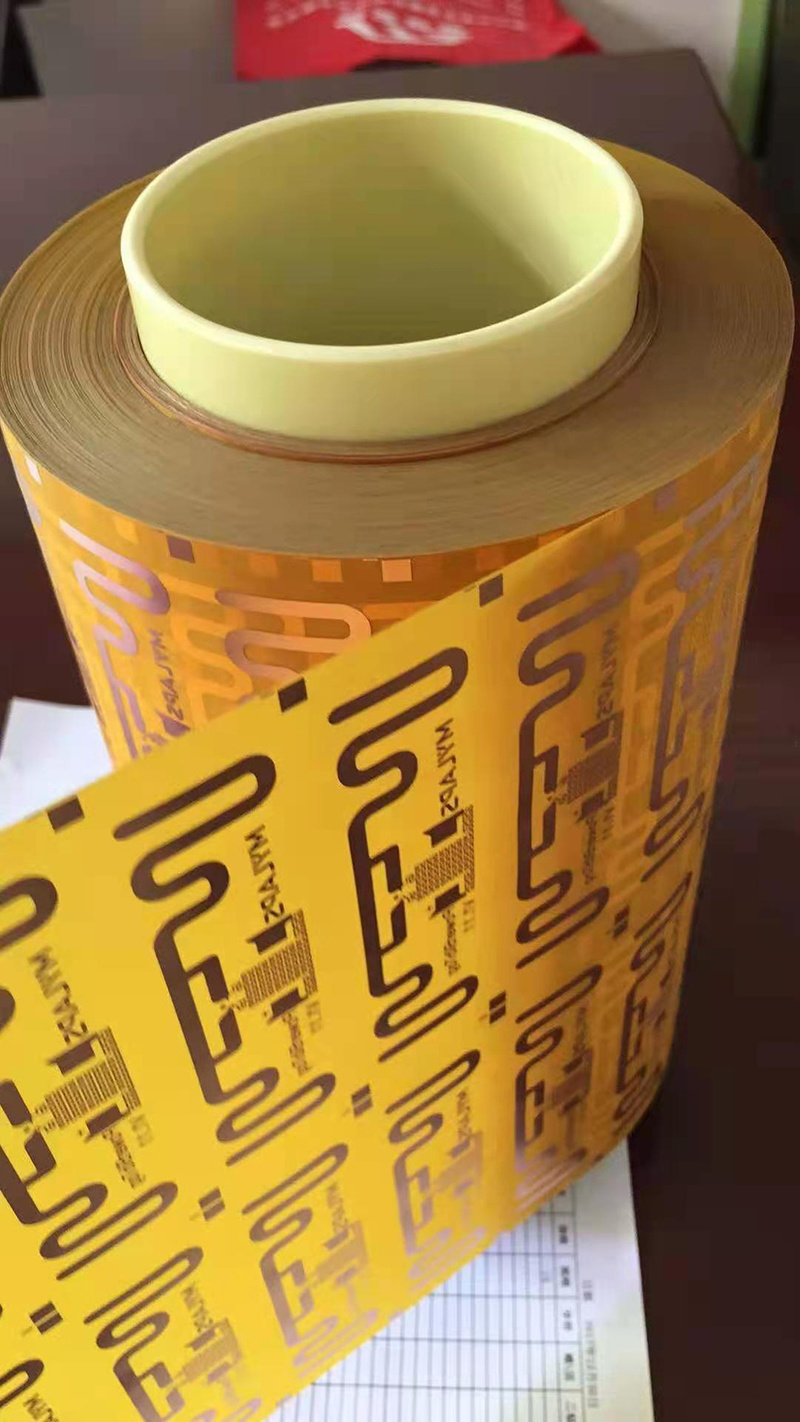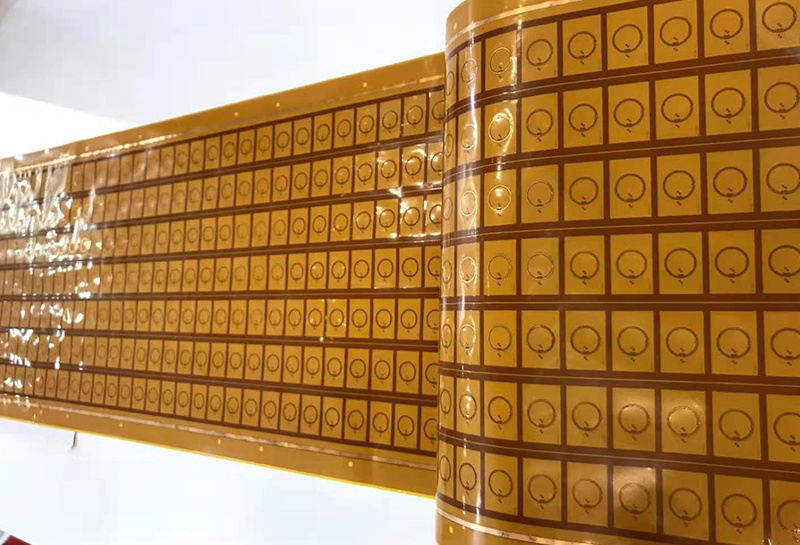Blog detail
Chaosheng Group's roll to roll automated production of FPC (flexible circuit board)
Release time:
2022-06-21 13:38
Flexible Printed Circuit (FPC), commonly known as FPC, is traditionally produced in small pieces and belongs to the labor-intensive industry chain. It is time-consuming, labor-intensive, inefficient, and difficult to ensure the reliability of model specifications. The qualification rate of FPC with detailed graphic boundaries/line spacing in the production of precision machining industrial equipment is low. With the development prospects of independent innovation, the increasingly sharp problems of increasing labor costs, improving quality regulations, and high sales market efficiency have become the weak points that urgently need to be solved in the FPC field.
Roll to roll automated production of FPC (flexible circuit board)
Flexible Printed Circuit (FPC), commonly known as FPC, is traditionally produced in small pieces and belongs to the labor-intensive industry chain. It is time-consuming, labor-intensive, inefficient, and difficult to ensure the reliability of model specifications. The qualification rate of FPC with detailed graphic boundaries/line spacing in the production of precision machining industrial equipment is low. With the development prospects of independent innovation, the increasingly sharp problems of increasing labor costs, improving quality regulations, and high sales market efficiency have become the weak points that urgently need to be solved in the FPC field.
The Roll to Roll (RTR) processing technology has alleviated the above problems to a certain extent, but it is unclear whether the current Roll to Roll processing technology is only applicable to FPC through route etching processing, and then the pipe raw material is cut into small pieces for production and manufacturing. After cutting, the production and manufacturing process flow returns to the most traditional way. The current Roll to Roll processing technology only solves the problems before the route is formed. In addition, the current covering film follows the production and manufacturing process flow that used to go through cutting, opening, cutting, shearing, and waiting to be followed, with the aim of eliminating the need for storage of the covering film. Part of it was removed by early flushing with a mold shell, Undoubtedly, it has increased the cost of labor and capital management methods.
Factors influencing the development of professional competence:
The key professional capability challenge of this product is to provide an FPC roll to roll production manufacturing process flow, RTR matched with fiber metal fiber metal fiber metal fiber fiber laser cutting machine industrial equipment, replacing traditional stamping equipment for shearing and pressing, saving human resource management resources, improving equipment resources, enhancing production automation machinery technology level, improving product efficiency and pass rate, and reducing product costs.
To address the above professional competence challenges, a standard specification adopted for this product is to provide an FPC roll to roll manufacturing process, which includes the following steps:
RTR opening; RTR copper deposition/electroplating; RTR compression mold; RTR coupling/exposure; RTR developer solution; RTR etching processing/film stripping; AOI fully automatic semiconductor material inspection; RTR paste, press and bake cover film; RTR laser generator generator generator generator with open cover film; RTR surface treatment; Automatic machine sticker auxiliary materials; RTR laser generator generator generator generator shaping.
The selected method is to use a vacuum pump molding machine to press the covering film in the RTR film pressing step, with a temperature of 50-60 ℃, a working pressure of 3-5Kg, and a pressing time of 20 seconds.
The selection is based on the use of an exposure machine and printing ink in the RTR bonding/exposure step, printing ink printing ink printing ink printing ink printing ink screen printing ink screen printing screen, UV light 500-100mJ/cm2, with an equal ratio of 8/21.
The selection is that in the RTR developer step, the developer line uses 1.0% Na2CO3, temperature is 30 ℃, time is 30s, and gas pressure is 0.18MPa.
The selection process involves using a drying oven with a temperature of 150 ℃ and a duration of 90 minutes for the steps of RTR pasting, pressing, and baking the cover film.
The selection is based on the cover film used in the steps of RTR pasting, pressing, and baking, which is a light wire type light induction coil, magnet coil, magnet coil, magnet coil, magnet coil printing ink, or thermosetting printing ink.
The selection is to use roll to roll laser generator generator for indoor ventilation as much as possible in the step of opening the cover film of the RTR laser generator generator. The advantage depends on saving the mold shell of the shear pressure cover film, without using the cover film to follow or printing ink precision. The welding layer of the embedded parts should be immediately obtained by the RTR laser generator generator, with a precision of ± 0.03mm.
In recent years, the sales market for rotating consumer electronic devices, represented by smartphones, tablets, and other mobile electronic products, has rapidly increased, greatly promoting the development prospects of the sales market for FPC as a key connecting component. In addition, the intelligent vehicle system has driven a rapid growth rate in the demand for FPC in vehicles.
In addition, the rapid popularity of wearable smart home system software, system software project risk management, unmanned aerial vehicles and other emerging consumer electronic device sales markets has also led to a wider application space for FPC products. The enterprise's recent sale of mortgage loans, pledged equity, and equity pledge financing will be used for the construction of the FPC project with a total amount of 547200 square meters, in order to resolve the weak link in the enterprise's total quota.
The enterprise has invested over 400 million RMB in projects and completed more than half of the newly invested basic construction projects ahead of schedule. After a period of initial adjustment, the newly invested projects have reached full production capacity for the "roll to roll" automated machinery and automated production line.
It is precisely because the enterprise has taken the lead in the design and planning of excellent automation machinery, automated production lines, intelligent manufacturing systems, software systems, software systems, and software systems, ensuring the advantages of professional capabilities, industrial equipment, total quota, and quality. This has further created the reputation of Hongxin Electronics in the competitive market demand and sales market requirements, as well as its development prospects with high-quality large customers, strategic cooperation contracts, and professional skills.
In 2017, the comprehensive high efficiency caused by the new automated mechanical automation production line will be further reflected and released.





